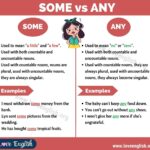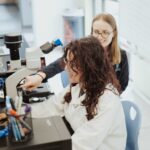How Animals Sustain and Enrich Our Environment

Introduction: The Indispensable Role of Animals in Our Environment
Animals are not just inhabitants of our planet-they are active architects of the natural world . From the tiniest insects to the largest mammals, each species contributes to the delicate balance that sustains life. Understanding how animals support the environment is crucial for anyone interested in conservation, sustainability, or simply preserving the planet for future generations. In this article, we’ll explore the many ways animals are vital to the environment, provide actionable steps for supporting their roles, and offer guidance for those seeking to make a positive impact.
Maintaining Ecosystem Balance
One of the most critical ways animals impact the environment is by maintaining ecosystem balance . Every animal, whether predator, prey, or decomposer, plays a specific role that ensures the continued health of their habitat. For example, predators like wolves help control the population of herbivores, preventing overgrazing and allowing plant communities to thrive. Without these natural checks, ecosystems can become destabilized, leading to the loss of biodiversity and the collapse of ecological networks [1] .
Deer populations in North America, for instance, have surged when predators were removed, resulting in over-browsed forests and diminished plant diversity. Reintroducing wolves to Yellowstone National Park led to a cascade of positive changes-vegetation rebounded, riverbanks stabilized, and new habitats emerged for a variety of species.
Practical Guidance: To support local ecosystem balance, consider participating in or supporting wildlife management programs through your state’s environmental or wildlife agency. You can also volunteer with local conservation organizations to help monitor and restore habitats.
Pollination and Food Production
Pollinators such as bees, butterflies, and some birds are responsible for fertilizing many of the world’s food crops. Without them, the production of fruits, vegetables, and nuts would decline dramatically, threatening food security and nutrition. According to conservation experts, about one-third of the food we eat depends on pollinators [1] . Pollinators also foster the growth of wild plants, supporting the entire food web.

Source: dreamstime.com
In California, for example, almond production relies almost entirely on bees. The loss of bee populations due to habitat destruction, pesticides, and disease has prompted farmers to rent hives for pollination-a costly and unsustainable solution in the long term.
How to Help: To support pollinators, plant native flowers in your garden, avoid using harmful pesticides, and leave patches of wild habitat undisturbed. You may also join community initiatives focused on pollinator conservation. For more information, you can consult your local cooperative extension or university agricultural department.
Seed Dispersal and Forest Regeneration
Many animals, including birds, primates, and large mammals, are key agents of seed dispersal . By consuming fruits and carrying seeds to new locations, they ensure the survival and spread of countless plant species. This process is vital for forest regeneration, biodiversity, and the resilience of ecosystems in the face of climate change [2] .
For example, elephants in African savannas eat large quantities of fruit and disperse seeds over great distances through their dung. This not only helps forests recover from natural disturbances but also supports a diverse range of plants and animals.

Source: digitalbloggers.com
Action Steps: Preserve and restore wildlife corridors to allow animals to move freely through landscapes. Support reforestation and afforestation projects led by reputable conservation organizations. When possible, participate in local tree-planting events and advocate for policies that protect wild habitats.
Nutrient Recycling and Soil Health
Scavengers and decomposers-including vultures, insects, fungi, and microbes-are nature’s cleanup crew. They break down dead organic matter, recycle nutrients, and enrich the soil, which in turn supports plant growth and agricultural productivity [1] . This process is essential for sustaining healthy and productive ecosystems.
For instance, dung beetles play a critical role in grassland ecosystems by burying and consuming animal waste. This not only returns nutrients to the soil but also reduces the spread of pests and diseases.
How You Can Contribute: Support sustainable farming practices that encourage biodiversity and soil health. Look for local farms that use regenerative agriculture techniques and consider composting organic waste at home to enrich your soil and reduce landfill pressure.
Regulating Climate and Air Quality
Animals have a profound impact on climate regulation and air quality. Whales, for example, contribute to the health of ocean phytoplankton, which produce at least half of the world’s oxygen through photosynthesis. By feeding and defecating at the ocean’s surface, whales fertilize these microorganisms, enabling them to absorb carbon dioxide and release oxygen [2] .
Similarly, healthy forests maintained by animal activity act as carbon sinks, slowing climate change and improving air quality. The loss of keystone species can disrupt these cycles, leading to increased greenhouse gases and diminished ecosystem services.
Supporting Climate Regulation: You can help by advocating for stronger protections for marine and terrestrial wildlife. Participate in local climate action groups, support ocean conservation efforts, and reduce your carbon footprint through sustainable choices.
Biodiversity and Human Well-Being
Biodiversity -the variety of life in all its forms-benefits people in numerous ways. Rich ecosystems provide food, clean water, medicine, and recreation, while also supporting mental and physical health [3] . A diverse web of animal life ensures resilience against disease, pests, and environmental change.
For example, many modern medicines are derived from compounds found in wild animals and plants. Coral reefs, home to thousands of species, are crucial for coastal protection and fisheries. The loss of biodiversity can have direct and indirect impacts on economies, livelihoods, and quality of life.
How to Promote Biodiversity: Support conservation organizations through donations or volunteer work. Participate in citizen science projects that monitor local wildlife. Encourage policymakers to fund biodiversity initiatives and preserve protected areas. For guidance, consult the International Union for Conservation of Nature (IUCN) or the World Wildlife Fund (WWF).
Challenges and Solutions in Wildlife Conservation
The importance of animals is clear, but their survival faces significant threats, including habitat loss, climate change, pollution, and illegal poaching. Addressing these challenges requires a combination of individual, community, and policy-level action. Solutions may include:
- Promoting responsible land use and habitat restoration
- Reducing plastic waste and pollutants in natural areas
- Supporting anti-poaching initiatives and wildlife law enforcement
- Educating others about the value of animals and ecosystems
Alternative Approaches: Urban residents can create wildlife-friendly spaces in their neighborhoods. Farmers can implement integrated pest management and agroforestry. Businesses can adopt sustainable sourcing and biodiversity-friendly policies. For those unsure where to start, local environmental agencies and non-profits can provide tailored advice and opportunities to get involved.
Step-by-Step: How to Support Animals and the Environment
- Learn about the native species in your region and their ecological roles through local nature centers or online resources.
- Join or support reputable conservation organizations; many offer memberships, volunteer opportunities, and educational materials.
- Reduce your ecological footprint by using fewer resources, recycling, and choosing sustainable products.
- Advocate for wildlife protection policies by contacting your elected representatives or participating in public comment periods.
- Share your knowledge and encourage others to value and protect animal life.
If you are unsure which organizations to support or which steps to take, you can contact your local department of natural resources, university extension, or conservation district. They typically provide directories, hotlines, or staff who can guide you based on your interests and location.






